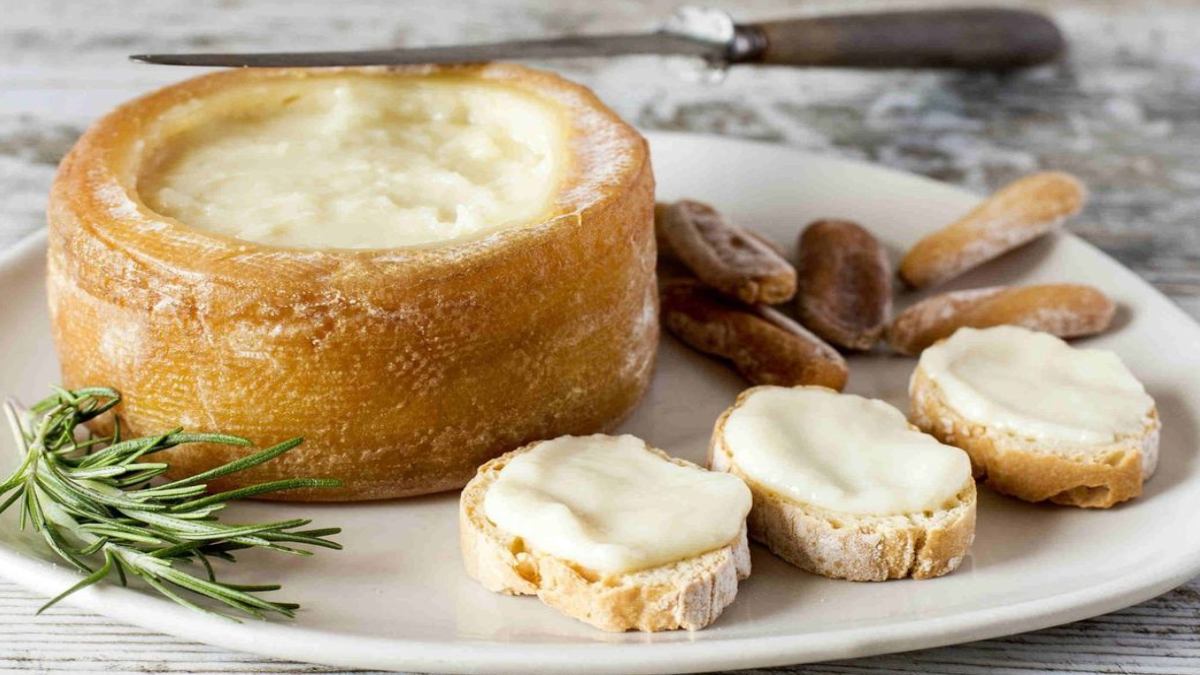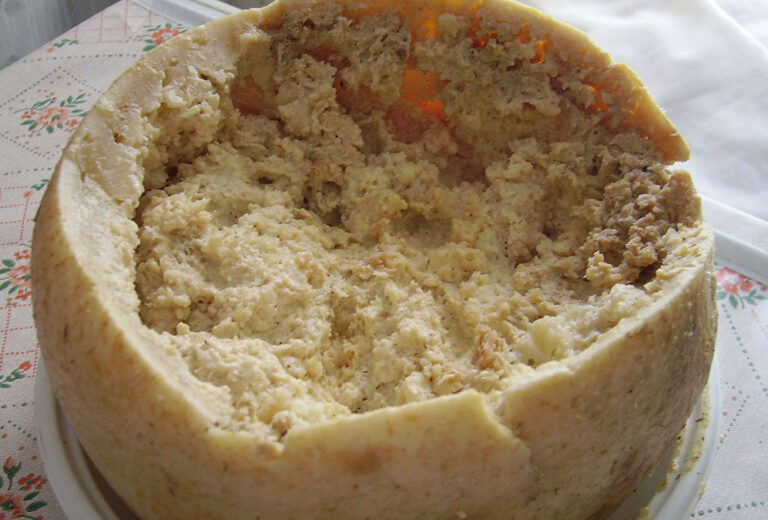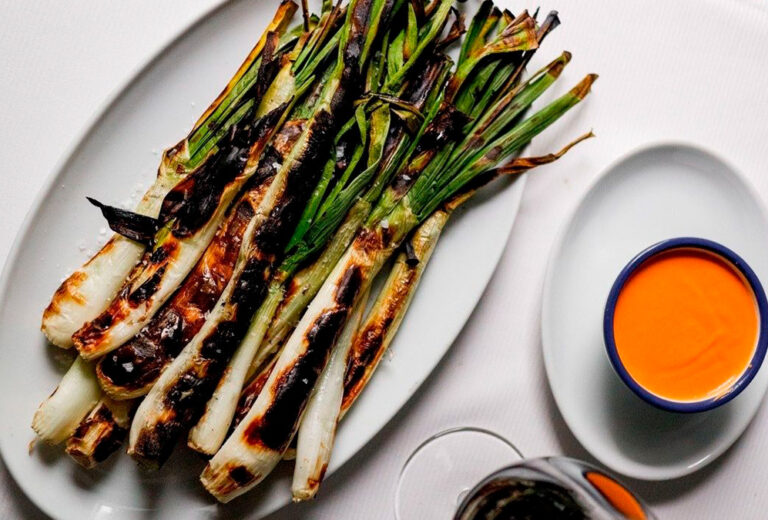Click here to read the Spanish version.
Addictive and revolutionary, cheese was the first canned food in history: it managed to maintain (fortuitously, of course) the properties of milk over time and conquered the different civilizations that inhabited the planet, including the Egyptians and the Celts. One of our favorite legends about the origin of cheese points to the nymphs of Greek mythology, and very earthly vestiges prove that its existence goes back thousands and thousands of years.
In Spain we are officially crazy about cheese –we consume almost 8 kilos per person per year-, and within our borders some of the best cheeses in the world are produced in an artisanal way –thanks to the precious milk of sheep, cows and goats native to each autonomous community-. These are the most representative cheeses of our country, from the Pyrenean forests to the volcanic lands of the Canary Islands.
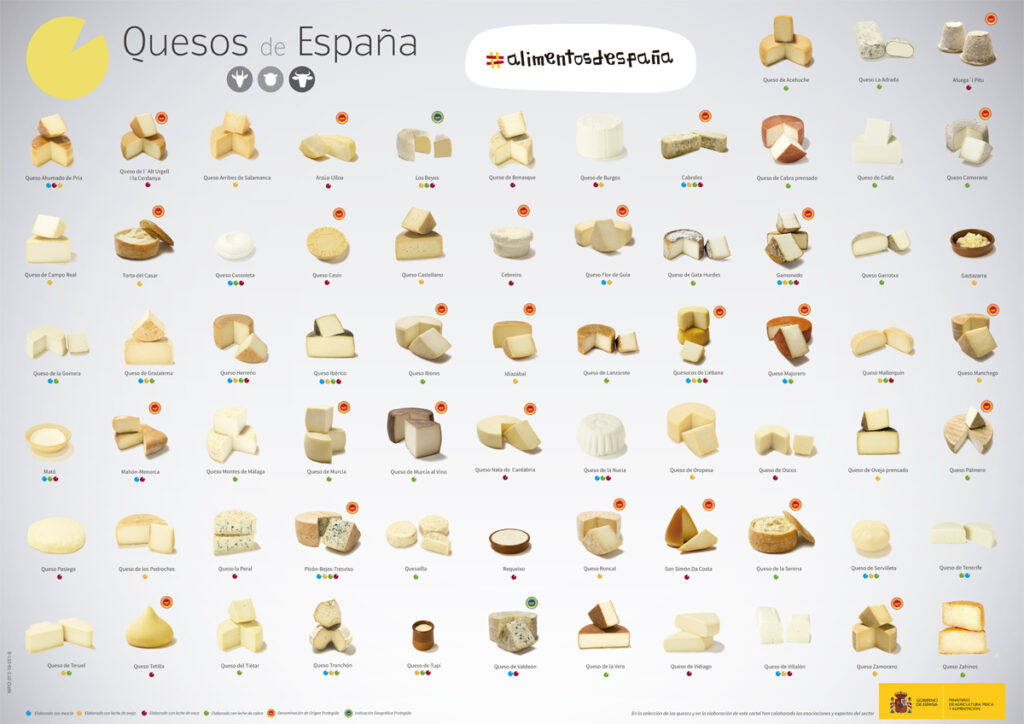
Andalucía
Delicious cheeses are made in almost every corner of this fascinating and diverse community, with goat’s milk playing a leading role (its mountains are home to such unique native breeds as the Murciano-Granadina, the Malagueña, the Florida or the Payoya). The one from Las Alpujarras -buttery and with a penetrating aroma-, the one from Aracena -impetuous and with character-, the one from Grazalema -intense and with a spicy touch-, the one from Los Pedroches -its flavors and aromas remind us of the pasture where the sheep that produce it feed-, the one from Ronda -leaves a powerful memory on the palate-, the one from the Serranía de Cádiz -its organoleptic qualities vary greatly depending on whether they are fresh, slightly sweet or cured- or the one from Sierra Morena -impregnated with the different nuances of the aromatic plants of the production area- are some of the most outstanding.
Aragón
The Tronchón -made with sheep’s and goat’s milk, it is one of the gastronomic protagonists of Don Quixote de la Mancha-, the Benasque -floral and somewhat saline, with hints of nuts- and the Tauste -made in Tauste and its surroundings with raw sheep’s milk and pasteurized cow’s and sheep’s milk- make up the succulent triad of the most important cheeses of Aragon, a territory full of lush forests and a long tradition of cattle raising, and pasteurized cow’s and sheep’s milk – make up the succulent triad of the most important cheeses of Aragon, a territory full of lush forests and with a long tradition of livestock farming.
Asturias
The untamed and beautiful Asturias is home to the greatest cheese diversity in Europe, where more than 50 types of artisan cheeses are produced: from the incisive Cabrales (depending on the type of milk used to make it, the intensity of flavor is accentuated), protected by a D.O. and unique in the world; to Gamoneu -also with a D.O.P.-, with soft touches of smoke, a slightly spicy touch and a persistent aftertaste of nuts (such as hazelnut).
But in this generous territory we find countless jewels in the form of cheese: the Casín -protected by its own D.O., it is characterized by its bitter and spicy flavors and its memories of butter seasoned by time-, the Afuega’l Pitu -also has its own D.O., and legend has it that its name, which means ‘to choke the throat’, comes from its main peculiarity: the compact and firm texture that increases as it matures-, the La Peral, from Oscos, Taramundi, Vidiago…
Balearic Islands
Mahón cheese is the star cheese of the Balearic Islands, and is steeped in the wild and magical energy of Menorca. As explained by the Regulatory Council of the PDO Mahón Cheese: “To make it we use milk from Menorcan cows and a method of millenary tradition. Then, the wind, humidity and light of Menorca are responsible for providing our cheeses with their peculiar, intense and unmistakable flavor“. Mallorcan cheese is also a delicacy, and is made by hand in the center and south of the island.
Canary Island
Each island of the Canary archipelago is touched by a unique magnetism. Just like its singular cheeses, some of the most peculiar in the world. Three cheeses from the Canary Islands – the community that consumes the most cheese per inhabitant – have a PDO. Three cheeses of the Canary Islands -the community that consumes the most cheese per inhabitant- have a PDO: Flor de Guía -creamy and animal, with a pinch of saltpeter-, Majorero -made with milk from Majorero goats, a breed native to Fuerteventura, is very different depending on its maturity and surface treatment; although it is usually characterized by its refreshing acidity and a spicy touch- and Palmero -the aroma of the goat’s milk with which it is made is very recognizable, as well as its hints of pasture, hay, mushrooms or nuts-.
Cantabria
This exuberant and rebellious land has a historical livestock tradition, and three cheese designations of origin converge here: the P.D.O. Picón-Bejes-Tresviso -a very special blue cheese, unctuous and full of subtle sweet and spicy nuances-, the P.D.O. Queso Nata de Cantabria -made with whole Friesian cow’s milk, it is very creamy and delicate- and the P.D.O. Queso Nata de Cantabria -made with whole Friesian cow’s milk, it is very creamy and delicate. Queso Nata de Cantabria -made with whole milk from Friesian cows, it is very creamy and delicate- and the Quesucos de Liébana P.D.O. -smoked or unsmoked, it is one of the most representative cheeses from the Cantabrian mountain range, with its lactic, mild and somewhat sweet flavor and a hint of nuts and vegetables-.
Castilla y León
Zamorano is the only cheese protected by a D.O. in this autonomous community full of contrasts. in this autonomous community full of contrasts: handmade with raw sheep’s milk from the native Churra and Castilian breeds, it transmits the essence of an extreme territory through a very characteristic flavor, “with an important reminder of sheep’s milk, warm and pleasant, which is complemented with hints of cooked butter and hay in the youngest cheeses, to evolve as the curing process progresses and give presence to memories of dried fruits, nuts and spicy nuances typical of volatile fatty acids”.
However, the largest producer of sheep’s milk in Spain and the second largest producer of cow’s milk has an exciting cheese variety, with two other quality figures: the IGP Queso Castellano -made with raw or pasteurized sheep’s milk, it awakens sensations of caramel and butter- and the IGP Queso de Valdeón -touched by the intensity of the mold, the ripest cheeses have spicy and fruity aromas-.
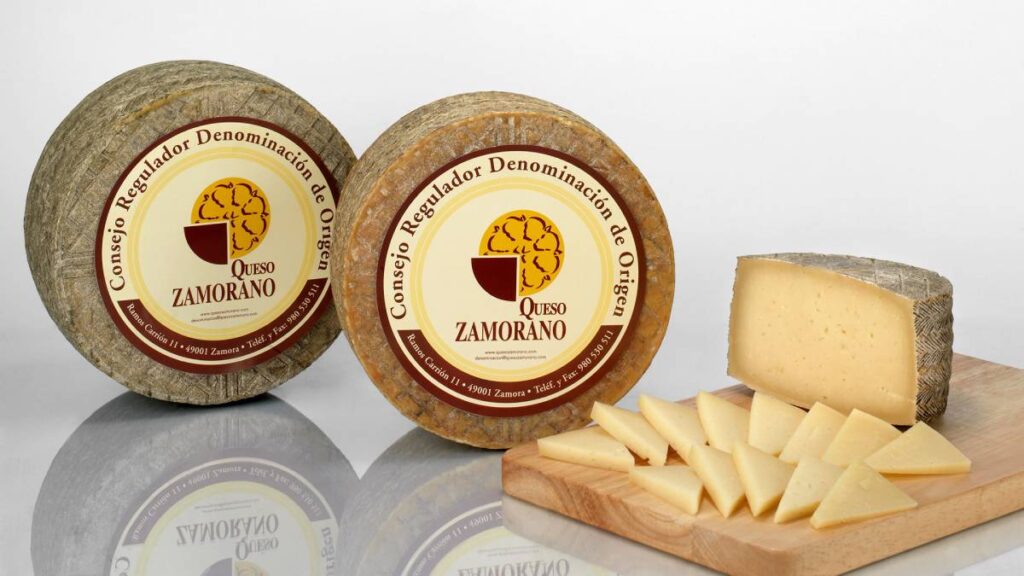
Castilla-La Mancha
In the majestic and inexhaustible Castilla-La Mancha -specifically in the provinces of Albacete, Ciudad Real, Cuenca, and Toledo- one of the most desired cheeses on the planet is made: Manchego cheese. This evocative pressed cheese, made from Manchego sheep’s milk, is aged for a minimum of 30 days for pieces made from pasteurized milk weighing 1.5 kg or less (60 days for all other formats) and a maximum maturity of 24 months. Splashed with small, unevenly distributed eyes, its flavor is slightly acidic, strong and tasty, and becomes spicy in very aged cheeses.
Catalonia
Heterogeneous and addictive, Catalonia produces cheese from the Ebro valleys to the Pyrenees. Precisely on the southern slopes of the central-eastern Pyrenees, an area of great natural wealth and fresh pastures, is where the only PDO cheese of the autonomous community is produced: the Cheese of Alt Urgell and Cerdanya. Made with fresh pasteurized cow’s milk, it is characterized by its tender and creamy texture, and its smooth and balanced taste. As explained on its website, its traditional maturing process favors the development of aromas with notes of toasted nuts, moss and mushrooms. Other very interesting cheeses of the territory are the Garrotxa -whose tradition was recovered in the Pyrenees of Gerona-, the Serrat -one of the oldest in Spain- or the Tupí -for its elaboration is used liquor, aniseed or brandy mixed with milk-.
Comunidad Valenciana
It is one of the most seductive destinations in Spain and, although Valencian cheeses are not covered by any P.D.O. or PGI, they are very special, standard-bearers of an ancestral tradition. Some of the most representative of the region are the La Nucia cheese, which is made with a mixture of goat and cow’s milk and has a very curious shape -like a cake-; the Cassoleta, with a volcano shape and a sweet and salty flavor; the Servilleta, also with a peculiar shape and very soft and pleasant on the palate; or the Blanquet, a fresh goat cheese with a sweet and slightly salty aftertaste.
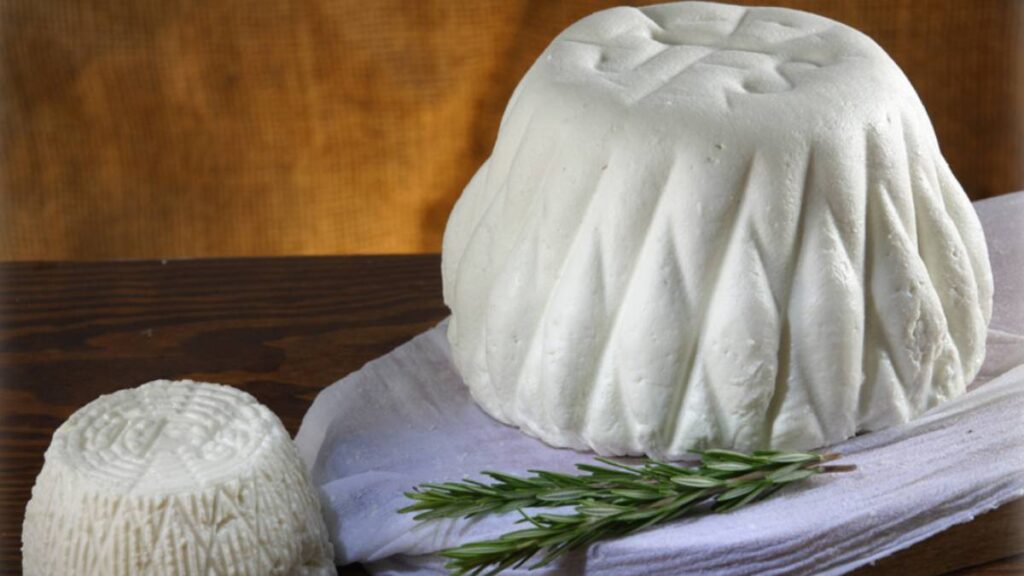
Extremadura
Deliciously unexpected, this is this land of deep livestock tradition where goats and sheep graze among oaks and cork oaks, transmitting the essence of Extremadura to the cheeses made with their precious milk. Four of them have their own PDO. : the famous Torta del Casar, one of Extremadura’s creamy gastronomic treasures – it is made with raw sheep’s milk, vegetable rennet and salt and its flavor is intense and addictive -; the Queso de la Serena, made with raw Merino sheep’s milk, unctuous and very peculiar; the Queso Ibores, made with raw sheep’s milk, unctuous and very peculiar; the Queso de la Serena, made with raw sheep’s milk, unctuous and very peculiar; Queso Ibores, which is produced with raw goat’s milk and offers attractive nuances -acid, spicy, vegetal, floral and fruity-; and the unique Queso de Acehúche, made with raw milk from Retinta goats and with a spicy flavor.
Galicia
Tangled in the impossible greens of the Galician forests and pastures, the cheese-making history of this mysterious and humid territory is most evocative. In fact, its cheeses are covered by four designations of origin: Tetilla cheese is the one that arouses more passions inside and outside our borders, and is characterized by its curious conical shape and smooth creaminess; San Simón da Costa is made in the region of Terra Chá (Lugo) with pasteurized cow’s milk and is very recognizable for its smoky flavor; Cebreiro, a fresh white cheese made with cow’s milk, shaped like a mushroom and with dairy flavors; and Arzúa-Ulloa, very creamy and with aromas reminiscent of butter and yogurt, with hints of vanilla, cream and walnut.
Community of Madrid
In the wildest and most unknown Madrid, far from the dizzying capital, delicious artisan cheeses are made. Those of the Sierra Norte de Madrid are usually made with sheep’s and goat’s milk from Guadarrama, a breed native to the area, in municipalities such as Colmenar Viejo, Fresnedillas de la Oliva or Guadalix de la Sierra. In the south of the Community, in Chinchón, Campo Real or San Martín de la Vega, sheep of the Manchega breed and the native Colmenareña black and Molar blonde sheep also play an important role.
Region of Murcia
This surprising community is home to everything from lush orchards to desert landscapes, and among the 1,001 flavors that are forged in these curious places are several very special cheeses, all made from Murcian-Granadine goat’s milk and protected by their corresponding D.O. These are: the cured Murcia Cheese -with intense vegetal and nutty aromas-, the fresh Murcia Cheese -moist and with very lactic flavors- and the Murcia Cheese with wine -its great peculiarity is that its rind is immersed in red wine from the region’s appellations of origin: Jumilla, Yecla and Bullas-.
Navarra
In Navarre there is a very suggestive diversity that is reflected in its native products, such as Roncal cheese -made entirely by hand with raw sheep’s milk, it was the first to receive the Denomination of Origin of Cheeses of Spain in 1981 and seduces with a slight spicy touch- and Idiazábal -European Gastronomic Heritage, produced in Navarre and the Basque Country with raw milk from sheep of the Latxa and Carranzana breeds-, both protected by a DO.
Basque Country
Idiazabal is the cheese standard bearer of Euskadi, an exciting and magnetic territory. With a history that goes back eight thousand years, the sensory nuances of this cheese vary “depending on the time of year, the grazing area, the weather and the hands of our cheese makers, who have been able to update the most deeply rooted traditions”. That is why, they explain on their website, each piece is unrepeatable: smoked or not, it usually shows a marked character of “matured sheep’s milk” and some natural rennet flavor.
La Rioja
We end our cheese route in one of the most exciting territories in Spain, that brave and welcoming Rioja that holds the secrets of Camerano cheese, the only Protected Designation of Origin cheese in the region. Made from goat’s milk, it can be fresh -moist and soft-, tender -sweet and slightly acidic-, semi-cured -with a salty touch and wild aromas- and cured -slightly acidic, salty and slightly bitter-.

